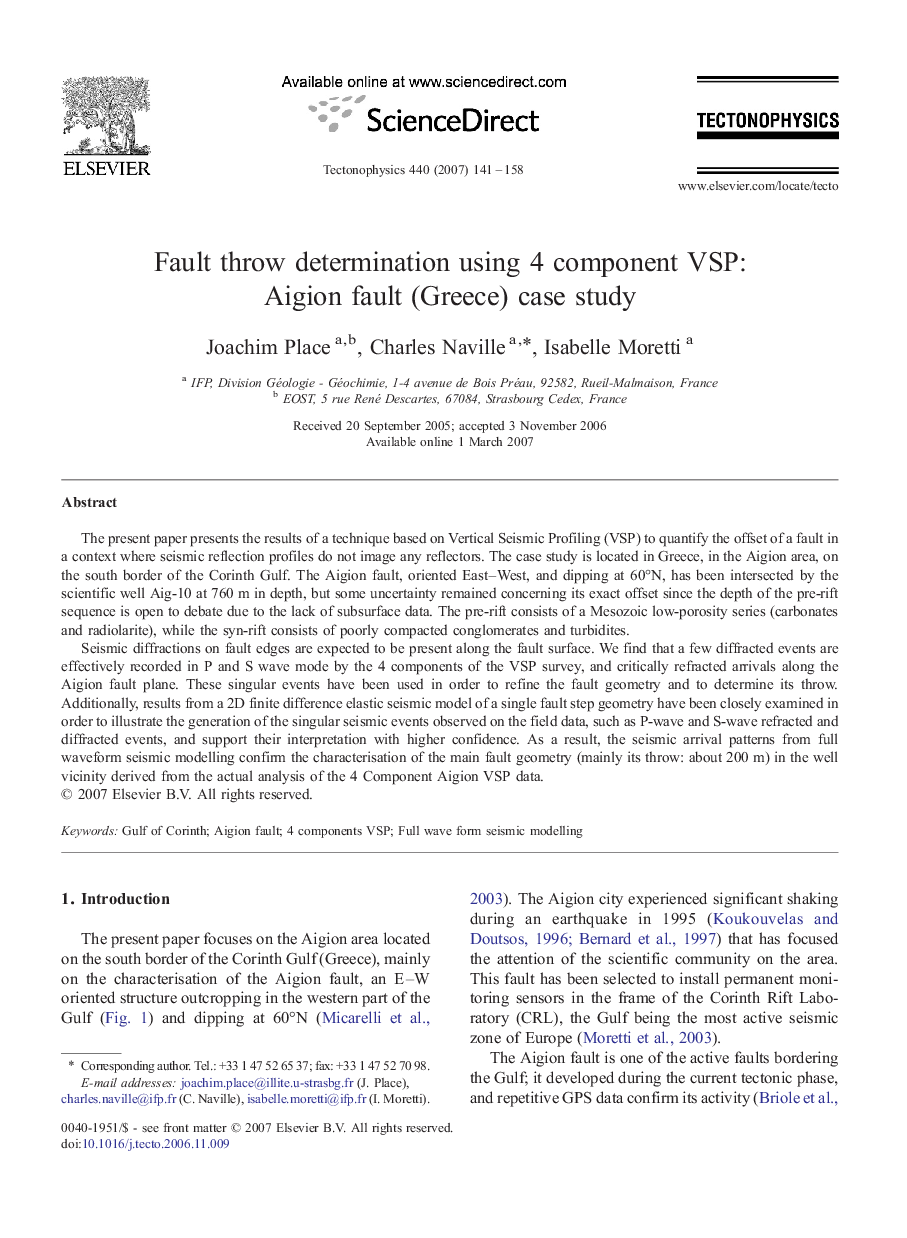| Article ID | Journal | Published Year | Pages | File Type |
|---|---|---|---|---|
| 4694638 | Tectonophysics | 2007 | 18 Pages |
The present paper presents the results of a technique based on Vertical Seismic Profiling (VSP) to quantify the offset of a fault in a context where seismic reflection profiles do not image any reflectors. The case study is located in Greece, in the Aigion area, on the south border of the Corinth Gulf. The Aigion fault, oriented East–West, and dipping at 60°N, has been intersected by the scientific well Aig-10 at 760 m in depth, but some uncertainty remained concerning its exact offset since the depth of the pre-rift sequence is open to debate due to the lack of subsurface data. The pre-rift consists of a Mesozoic low-porosity series (carbonates and radiolarite), while the syn-rift consists of poorly compacted conglomerates and turbidites.Seismic diffractions on fault edges are expected to be present along the fault surface. We find that a few diffracted events are effectively recorded in P and S wave mode by the 4 components of the VSP survey, and critically refracted arrivals along the Aigion fault plane. These singular events have been used in order to refine the fault geometry and to determine its throw. Additionally, results from a 2D finite difference elastic seismic model of a single fault step geometry have been closely examined in order to illustrate the generation of the singular seismic events observed on the field data, such as P-wave and S-wave refracted and diffracted events, and support their interpretation with higher confidence. As a result, the seismic arrival patterns from full waveform seismic modelling confirm the characterisation of the main fault geometry (mainly its throw: about 200 m) in the well vicinity derived from the actual analysis of the 4 Component Aigion VSP data.
